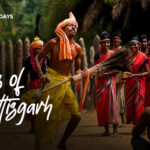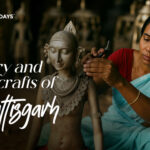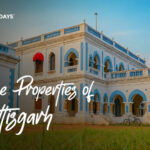- Home
- INDIA
- Offbeat India
- International
- Theme Tours
- Blogs
- Case Studies
- Plan Your Trip
Birbhum
Birbhum Tour
Discover Birbhum: A Cultural and Historical Journey Nestled in the eastern part of India, Birbhum is a captivating district in West Bengal renowned for its cultural vibrancy and historical richness. Known for its warmth, festivals, art, and captivating natural beauty, […]
Discover Birbhum: A Cultural and Historical Journey
Nestled in the eastern part of India, Birbhum is a captivating district in West Bengal renowned for its cultural vibrancy and historical richness. Known for its warmth, festivals, art, and captivating natural beauty, Birbhum offers an immersive experience for those seeking to explore its legacy and charm. Let us take you on a journey through the historical tales, cultural celebrations, scenic landscapes, and famous attractions of Birbhum.
Embracing the Essence of Birbhum
Birbhum, often called the “Land of the Red Soil,” is a district rich in history, art, and cultural heritage. With a legacy steeped in tradition, it is a melting pot of historical narratives, unique geographical features, a distinctive political landscape, and a vibrant cultural ethos. From age-old temples to lively fairs, Birbhum presents an enchanting glimpse into the soul of rural Bengal.
Highlights of Birbhum
Shantiniketan: A Vision of Knowledge and Culture
Shantiniketan is widely celebrated as the home of Rabindranath Tagore, India’s Nobel laureate and the founder of Visva Bharati University. This quaint town is more than just a place; it is an educational and cultural hub, embodying Tagore’s vision of an open, nature-based system of learning, away from conventional classrooms. Nestled in nature’s lap, Shantiniketan has become a unique tourist haven where the confluence of knowledge and aesthetic brilliance inspires everyone.
How to Reach Shantiniketan
The nearest airport is Kolkata International Airport, approximately 160 km away. For those traveling by train, Bolpur Railway Station is the closest, located just a few kilometers from Shantiniketan. The town is also well connected via road, with buses and taxis readily available for convenient access.
Tarapith: The Seat of Divine Power
Tarapith is a famous Hindu pilgrimage site and a revered Shakti Peetha, believed to be the spot where Sati’s third eye fell. Goddess Tara, a manifestation of Sati, is worshipped here. The town is steeped in legends and folklore, also known as the “City of Tantra Mantra,” due to its association with tantric practices. Adjacent to the Shakti Peeth lies an eerie yet fascinating cremation ground, where devotees practice rituals and chant mantras throughout the day and night, giving Tarapith an air of mystery and spirituality.
How to Reach Tarapith
Tarapith is well-connected by road, with buses and taxis frequently available. The nearest railway station is Rampur Hat, located about 6 km away from the town. Visitors can easily find taxis to reach Tarapith from Rampur Hat station for around INR 150. Trains are available from major cities, including Howrah and Sealdah.
Cultural and Natural Highlights of Birbhum
Vibrant Festivals
Birbhum’s culture is vibrant, with festivals like Basanta Utsav, Poush Mela, and the Baul Fakir Utsav creating a colorful and festive atmosphere throughout the year. These festivals celebrate the art, culture, and traditions of Bengal, attracting a global audience keen on experiencing authentic rural festivities.
Geographical Features
Birbhum’s diverse geography includes a combination of river valleys, red soil plains, and lush greenery. The Dwarka River and Ajay River pass through the district, enhancing its scenic charm and providing a fertile landscape for agriculture and horticulture.
People and Culture
The people of Birbhum are known for their hospitality and warmth. Art and music play an essential role in their lives, and you can often witness performances by Baul singers, the wandering minstrels of Bengal, who spread messages of love and unity through their mystical tunes.
Famous Tourist Attractions in Birbhum
- Visva Bharati University, Shantiniketan: Established by Rabindranath Tagore, this university is both an academic institution and a cultural center that attracts visitors with its unique educational ideals.
- Tarapith Temple: A significant Shakti Peetha and a spiritual hub, drawing pilgrims for its association with tantric rituals and the legend of Goddess Tara.
- Kankalitala Temple: Another important pilgrimage site, considered one of the Sati Peethas where the waist of Sati is believed to have fallen.
- Bakreshwar: Known for its hot springs and the Bakreshwar Temple, it is a popular spot for both spiritual seekers and those seeking therapeutic benefits of the hot water springs.
- Joydev Kenduli: Famous for being the birthplace of poet Joydev, this village hosts the Joydev Mela, a celebration of Baul music and culture, every January.
Birbhum is more than just a district; it is a cultural treasure trove where tradition, history, art, and spirituality intertwine beautifully. From the tranquil educational hub of Shantiniketan to the mystical and vibrant Tarapith, Birbhum invites you to experience its unique essence. Whether you are a history buff, a spiritual seeker, or a lover of nature and culture, Birbhum will captivate your senses and leave you with lasting memories.
Experiences
- Chanderi SilkNovember 28, 2025
- Waterfalls of ChhattisgarhOctober 29, 2025
- Tribals of ChhattisgarhAugust 12, 2025
- Jewellery and Handicrafts of ChhattisgarhAugust 12, 2025
- Heritage Properties of ChhattisgarhAugust 12, 2025
- Chanderi Silk
Call
98742 84569
98743 61951
Mon-Sat 11.00AM-07.30PMNewsletter
Rate & Review Us
Contact Info
- +91 98742 84569
- experience@ocean6.in
- 16, Suren Tagore Rd, Ekdalia, Ballygunge, Kolkata, West Bengal 700019
- Mon - Sat : 11.00 AM - 7.30 PM
Sunday : CLOSED
Newsletter
Quick Links





